Beautiful elements of landscape design
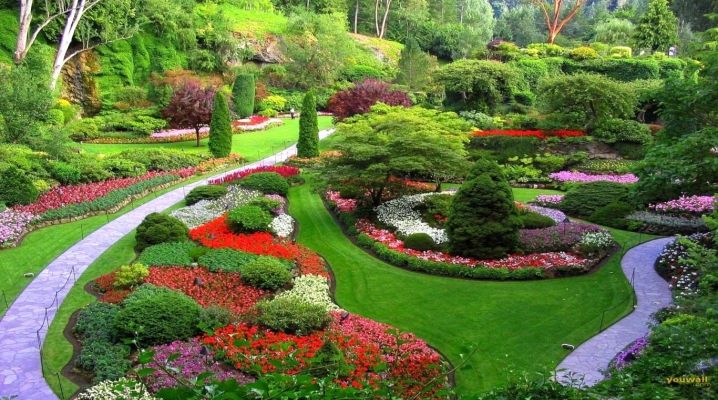
Competently designed landscape design of the site is a whole art. Before planning the location of flower beds, alpine slides, decorative figures, wooden benches and other elements, you need to understand in what style the house is made and how to create a suitable landscape for the local area.

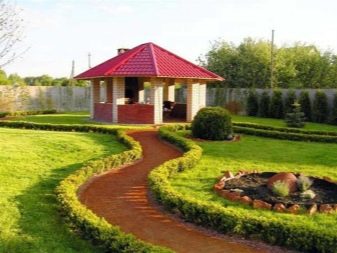
Peculiarities
For the successful implementation of the conceived landscape project, it is necessary to adhere to the following recommendations:
- you must clearly represent the work plan before the start of the site improvement and do not change it in order to avoid the layering of decorative elements of different styles;
- take into account the climatic zone, humidity indicators, temperature regime inherent in the territory being developed;
- carefully consider the role of each element in the overall composition;
- correlate time, labor and financial costs with the expected end result.

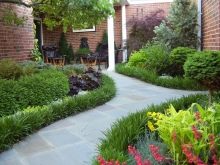
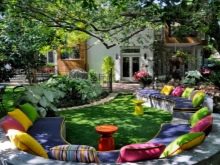
Important points
Before you start to bring your landscape ideas to life, you need to think through several important points:
- Idea. If you have not yet fully decided what you want to see on your site, postpone landscaping.
- Color solutions. In order for the garden to delight visitors and owners with its beauty, it is necessary to clearly plan the arrangement of bright and dark plants, as well as flowers of light shades.
- Composition. In order for the view of the garden to be complete, it is necessary to determine the center of the composition and supplement it with details (dim and medium-sized) that would not distract attention to themselves.
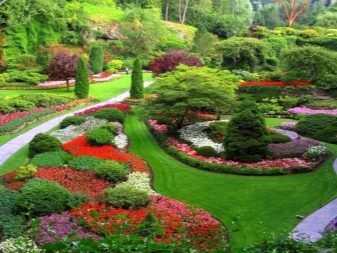
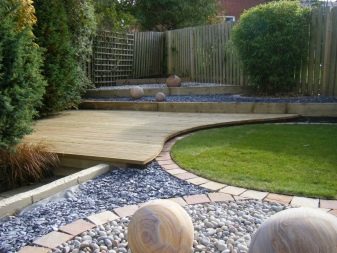

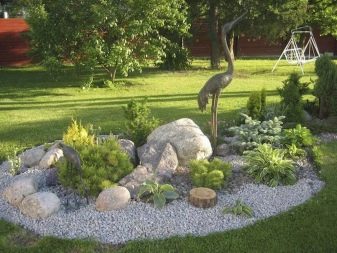
- Accents. The central area should be emphasized with decorative elements. This can be a highlight, color, or a group of objects. In order to beautifully highlight the central part of the composition, it is better to consult with specialists in landscape design.
- Light. Garden lighting is needed not only in the warm season. In winter, against the backdrop of snow, this decorative element will add a touch of magic to the atmosphere of the garden. At night, backlighting can decorate shrubs, paths, flower beds.
- Tracks. To view the garden in all its beauty, it is necessary to think over a system of movement around the territory. When designing the plan of the paths, remember that they must be in harmony with the overall design idea.
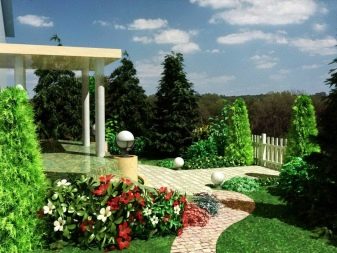
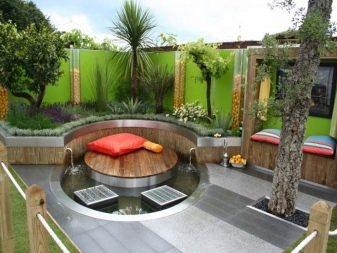
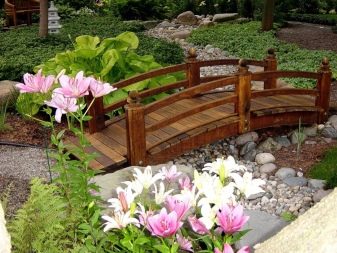
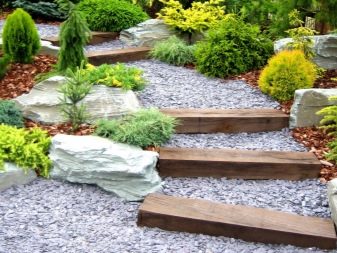
Lawns
Lawn coverings are the most used element of decorating the local area. The cover can be created with your own hands or purchased from a specialized store.
Self-planted lawn (sowing) will become the basis for landscape design throughout the site. On it, you can envisage the location of fruit trees, shrubs, flower beds, relief features of the paths.
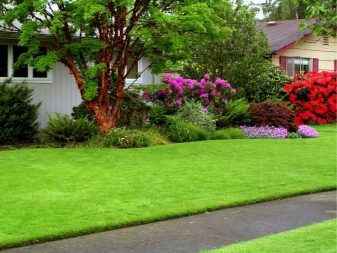
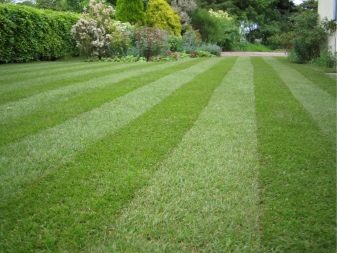
A lawn with short-cut homogeneous vegetation is usually called English. It needs to be planted with cereals that will grow well in the same place for more than a dozen years. Considering the Russian climate, it is worth choosing mixtures that include different varieties of fescue. In order for the lawn to acquire a dense cover and an even structure, it will take several years.
Lawns can perform not only a decorative, but also a sports function. For example, if they are used as a covering for a football field or tennis court. A good solution would be the location of the lawn in the play area for children and the installation of a playground.
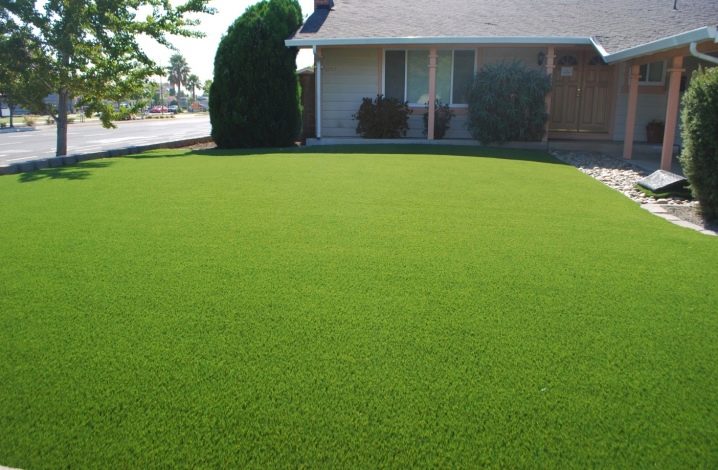
Sand or gravel should be used as the basis for the lawn. They should be planted with fescue, bluegrass and ryegrass. Do not forget to regularly update the coverage by seeding.
As for decorative lawns, it is customary to divide them into three types:
- parterre;
- garden and park;
- meadow.
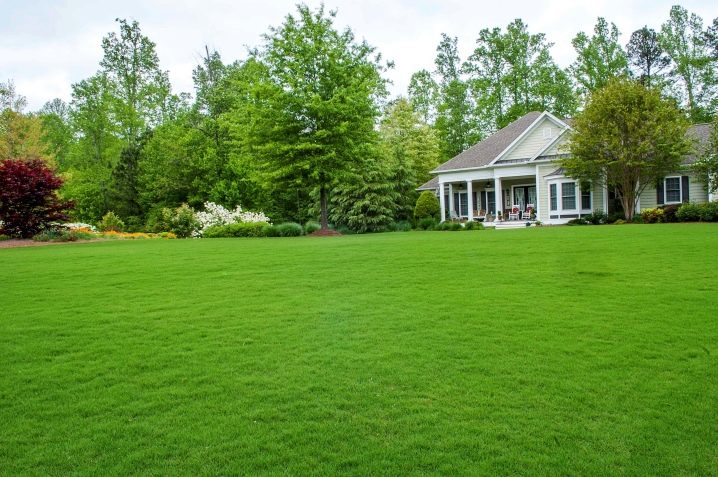
Among these positions, the parterre lawn is the most difficult to design and the most capricious. Such a site is formed from a single-sorted grass: bluegrass, bent grass, fescue. When forming a parterre lawn, it is necessary to take into account that its area cannot exceed the size of the object located on it.
Gardening options look less impressive, but they do not require special care and are able to withstand heavy loads. To create such a lawn, it is better to choose ryegrass, bluegrass, comb and fescue, mixed in equal proportions.
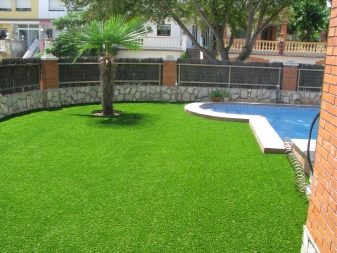
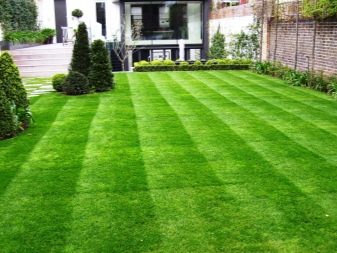
Meadow lawns are very beautiful and unpretentious. Before sowing, the site must be dug up, weeds (dandelions, plantains) must be removed. Then sow with a mixture of ryegrass, fescue and bluegrass, taken as a base, adding sainfoin and clover.
For those who want to see a riot of bright colors in their local area, we can recommend creating a lawn from ground cover flowers and herbs.
This type of lawn does not require special care and fertilization. It can be fertilized with humus obtained from autumn leaves.
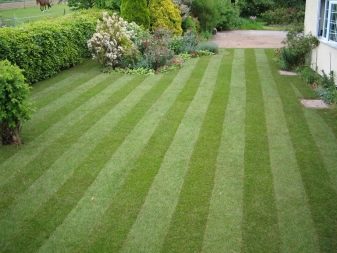
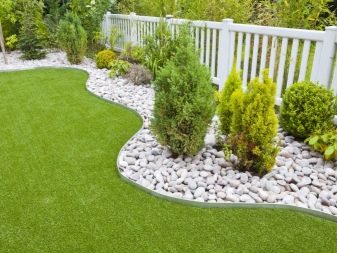
You can lay a ready-made roll lawn. The main thing, so that it is cut no more than two days before planting. It is in this case that there will be no problems with engraftment in a new place. The soil must be leveled before laying the lawn. Water the lawn well after laying.
Flower beds
Flower beds can be arranged in such a way that flowering is continuous. Snowdrops, crocuses, tulips, lilies of the valley, scillas, daffodils appear among the first spring flowers. In order for the flowers to be strong, not to die from severe frosts and gusts of wind, they need to create a hedge of shrubs. Periwinkles, asters, marigolds and chrysanthemums will delight you from late August until frost.
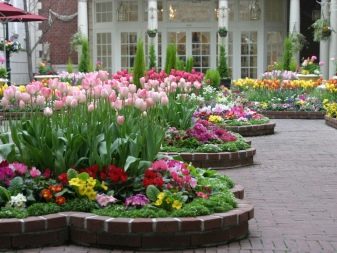
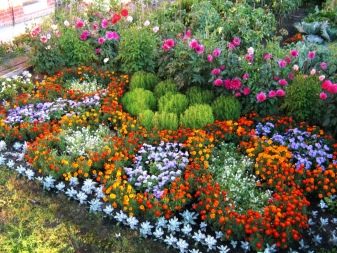
In the center of the garden, you can organize a flower bed that will delight you all year round. For her, you need to pick up beautiful dried flowers: molucella, gypsophila, calceolaria.
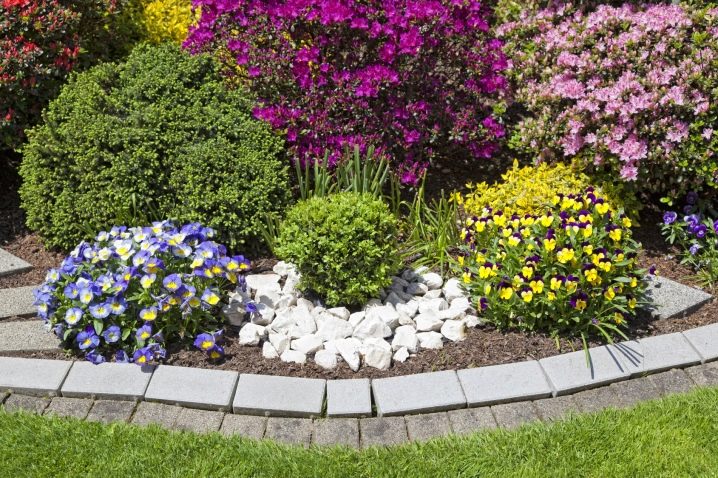
Types of flower beds
The flower bed familiar to us has a square, round or rectangular shape. It rises 20 cm above the level of the main site and can be equipped with a stone or brick podium. The choice of plants with which the flower garden is planted remains with the owner. These can be flowers of the same type or different varieties:
- Rock gardens are very popular among flower beds. They include not only flowers, but also stone decorations. This type of flower garden will look good near a reservoir.
- Ornamental flower beds are placed in the foreground of the garden zone. Their variety - the arabesque - consists not only of plants (mostly stunted), but also of such natural materials as sand, stone, small pebbles. In the center of the composition, you can install a sculpture or a small fountain.
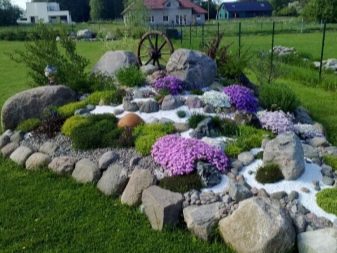
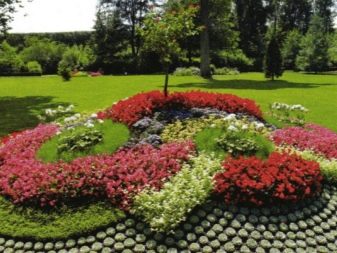
- A living frame for flower beds is usually called a border. It consists of plants whose buds cannot be called bulky. The main function of the curb is to completely cover the soil.
- A kind of border can be considered a rabatka. Most often it is placed parallel to garden paths or around a recreation area. A flower bed is formed from high or low flowers. There are also mixed design options.
- Group and modular flower gardens look good on the adjoining garden plots. If the first type of flower beds does not have a clearly defined shape, then the second has the outline of geometric shapes: a square, a rectangle, a rhombus. Paths (trodden in the ground or paved with stone) are laid between the sections of modular flower beds.



If there is a reservoir on the site, you can create a water flower garden, and next to it, equip a recreation area with benches and wooden swings.
Creative lovers can arrange a flower bed in an old basket or cracked trough.
Alpine slides
Stones of different shapes, colors and sizes will be an excellent decoration for the garden if they are placed in harmonious combination with other objects.
Most often, limestone, tuff, shale, sandstone, and granite are used in the adjoining territories. They can be used as a decoration for paths, flower beds, reservoirs, or as independent compositions.
There are several types of rock gardens:
- Architectural - created simultaneously with the construction of a house. It is a multi-level terrace-like composition made of natural stone. Inside the terraces, plants are planted that can grow on rocky slopes: shrubs, conifers.
- Landscape - includes a waterfall, a flat place, a gorge. For naturalness, it is better to place such a slide next to a pond. This type of rock garden requires detailed development and significant material costs.


- Rocky is the most budgetary option. Outwardly, this rock garden looks like a small hill with stones in random order.
- Rocky - appropriate if there is a steep hill in the local area. In such a rock garden, the focus is on large boulders, not vegetation.
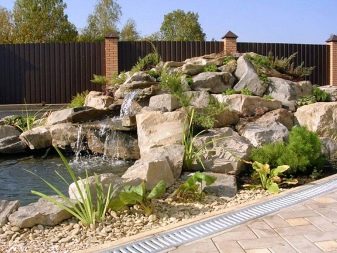
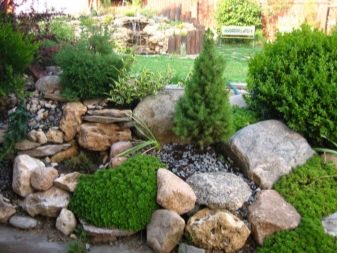
- Mountain - the most difficult type of alpine slide to create. Lumps should go into the ground by 30 centimeters (for naturalness), and on a rocky surface, a group planting of dwarf plants is necessary.
- The terraced slope is somewhat similar in appearance to the ruins of an ancient castle. Such a rock garden can be created on an area with a steep slope. Terraces are different in height, shape and length.
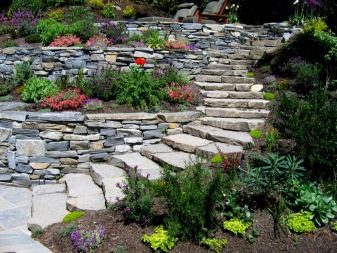
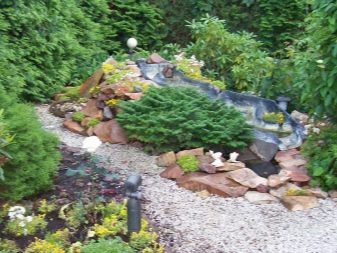
- Alpine lawn is the most popular type of rock garden. When creating this type of slide, wild plants are used: edelweiss, creeping willow.
- Mountain Valley - created from individual flower arrangements, separated from each other by paths and chaotically located large boulders, a little dug into the ground.
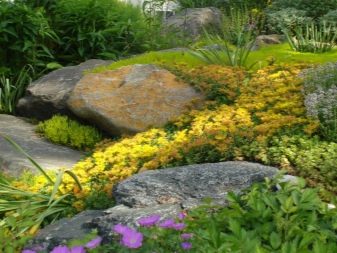
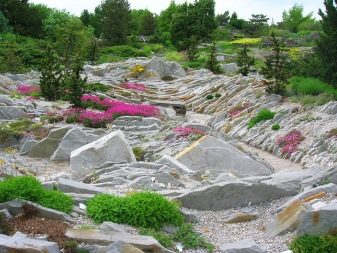
- A forest ravine is ideal for an area with a natural soil slope. An artificial waterfall can be created nearby.
- Gorge - fits well between two slopes, decorated with stone. In places designated for plants, it is better to plant medium-sized crops: bell, fern.
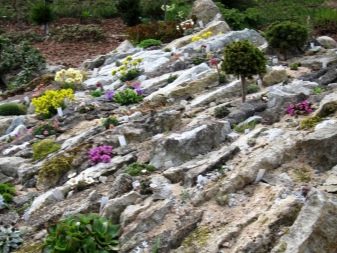

An overview of landscape design on your own project, see below.



































































The comment was sent successfully.